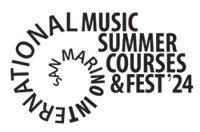The Dramatic of the Voice, Techniques and Styles from Contemporary Music to Musical
Project
This course is dedicated to the different approaches in the repertoire of 20th and 21st century, from decoding partitura to the genuine interpretation of the music.
First of all, the focus is on the developing and choosing the right techniques – vocal gestures and rhetoric, which are necessary for keeping the voice healthy and ready for extreme demands of the contemporary
repertoire, while feeling comfortable with the score.
Sprechgesang, twang, chest voice, various ways of vibrato etc. are the techniques on which we will be working in order to have a high quality performance of the pieces written by Berio, Scelsi, Weil, Schoenberg,
Berberian, Kander, Cage etc.
Contemporary music is a sublimation of folk, jazz, electronic, pop music and many other styles, which every singer should know how to implement on the modern music scene. It is necessary to be ready for exploring new ways of interpretation – to develop personal creativity while respecting the nature of the voice.
Finally the mission of the singer is to make music of 20th and 21st century more approachable and exiting to the audience.
Singing in Ensemble From 19th Century to nowadays
Explore the world of ensemble singing in our summer course, where we will focus on the repertoire that stretches from the 19th century to contemporary compositions.
Improve the skills and discover a variety of musical pieces, by working on important elements such as listening, breath control, and posture.
This program encourages individual awareness, physical relaxation, and collective harmony. Participants will combine solo and group singing, while in the same time focusing on the interpretation.
Join us for a musical journey where voices come together to create beautiful harmony across different time periods.
Key Course Highlights:
• Listening Skills – practicing blending pitch, vowel, and volume for a harmonious sound within the ensemble;
• Breath and Posture – learning essential vocal techniques, including breath control and proper posture, to enhance singing experience;
• Individual Awareness – staying connected to your own voice while contributing to the overall harmony of the group;
• Physical Freedom – focusing on relaxation and ease in singing, avoiding tension-inducing habits for a smoother performance;
• Ensemble Unity – working on the matching pitches and creating a unified sound that reflects natural harmony, fostering teamwork;
• Diverse Repertoire – exploring the music from different eras and styles, ranging from 19th-century classics to contemporary pieces;
• Interpretation – gaining insights into adding emotion, nuance, and artistic expression to your ensemble singing.



